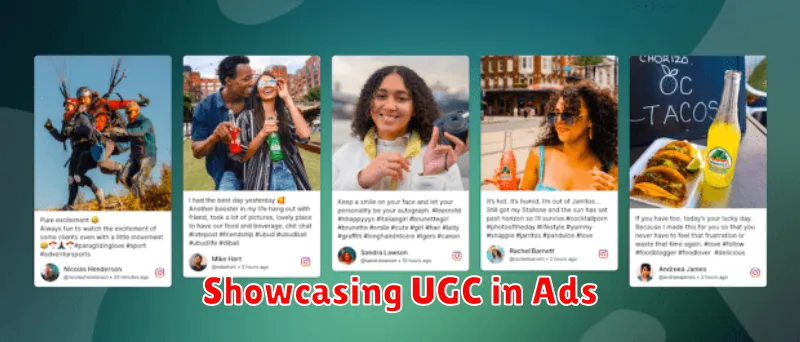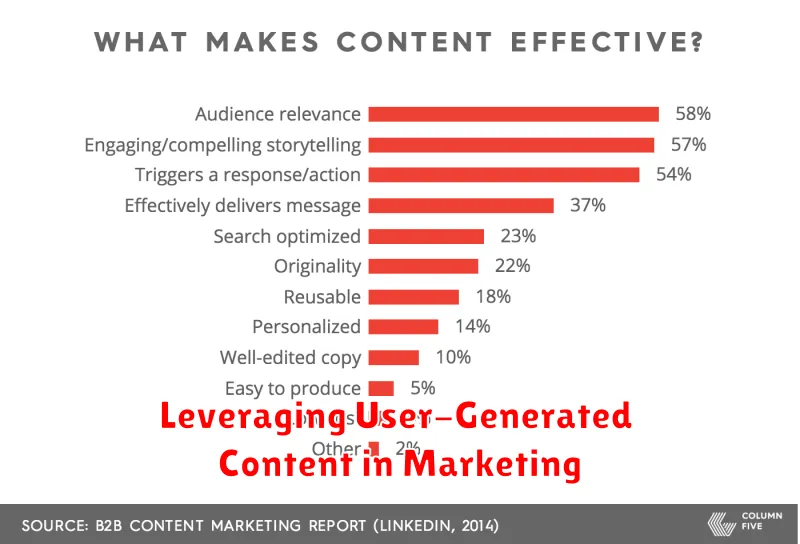In today’s digital landscape, user-generated content (UGC) has emerged as a powerful marketing tool. Leveraging user-generated content effectively can significantly impact brand awareness, build trust and loyalty, and ultimately drive sales. This article will delve into the strategies and best practices for harnessing the power of UGC in marketing, exploring how to encourage, curate, and integrate authentic content created by your customers to elevate your brand’s presence and resonate with your target audience. We will examine how leveraging user-generated content can provide valuable social proof, enhance engagement, and offer cost-effective marketing solutions.
From social media campaigns to website testimonials, user-generated content provides a wealth of opportunities for businesses seeking to connect with their customers on a deeper level. This article will discuss how to effectively leverage UGC in marketing initiatives, including practical tips for incorporating user-generated content into your overall content strategy. We will also explore ethical considerations and legal guidelines for utilizing UGC while respecting user privacy and intellectual property rights. Ultimately, this article aims to provide a comprehensive guide for understanding and leveraging user-generated content to achieve your marketing objectives and foster genuine connections with your audience.
What Is User-Generated Content?
User-generated content (UGC) refers to any form of content created by individuals, rather than brands, and shared publicly online. This content can take various forms, including:
- Social media posts: This includes text updates, photos, and videos shared on platforms like Instagram, Facebook, Twitter, and TikTok.
- Reviews: Product or service evaluations posted on websites or dedicated review platforms.
- Blog posts and articles: Individual perspectives and experiences related to a brand or product.
- Videos: Ranging from short clips to in-depth reviews and tutorials hosted on platforms like YouTube.
- Audio: Podcasts or music incorporating a brand or product organically.
- Forum posts: Discussions and comments within online communities about a brand or industry.
The key characteristic of UGC is its authenticity. It represents genuine experiences and opinions, unlike branded content which is inherently promotional. This organic nature makes UGC highly valuable for brands.
Benefits for Your Brand

Integrating user-generated content (UGC) into your marketing strategy offers a multitude of benefits. It can significantly impact your brand’s reach, credibility, and overall performance.
Increased Authenticity and Trust: UGC builds trust with potential customers because it comes from genuine experiences, not directly from your brand. This organic content resonates more deeply with audiences who are often skeptical of traditional advertising.
Enhanced Brand Engagement: UGC encourages interaction. When you share and respond to customer content, you foster a sense of community around your brand and strengthen customer relationships. This two-way communication builds loyalty and encourages repeat business.
Cost-Effective Content Creation: Developing high-quality marketing materials can be expensive. UGC provides a constant stream of readily available content, reducing your reliance on costly professional photography, videography, and copywriting.
Improved SEO Performance: Search engines often prioritize diverse content. UGC helps enrich your website and social media profiles with fresh perspectives and keywords, potentially boosting your search rankings and online visibility.
Valuable Insights into Customer Preferences: By analyzing UGC, you gain direct insight into how customers perceive and use your products or services. This information can inform product development, marketing campaigns, and overall business strategies.
Getting Permission to Share
Using user-generated content (UGC) effectively involves respecting the rights of the creators. Before sharing any UGC on your platforms, it’s essential to obtain explicit permission from the original creator.
Directly contacting the user is the most reliable method. A simple and polite message through the platform where the content was originally posted is often sufficient. Clearly state your intention to share their content, specifying where it will be used (e.g., your website, social media channels, advertisements). Outline how you plan to credit them (e.g., mentioning their username, linking to their profile).
Consider using a permission request template to ensure consistency and clarity. This also simplifies the process for both parties. Some platforms offer built-in tools for requesting permission, which can streamline the workflow.
Documenting permission is crucial. Keep a record of the user’s consent, including the date and time of their approval. This protects both your brand and the content creator in case of any future disputes.
Running UGC Campaigns
Strategically running user-generated content (UGC) campaigns can significantly amplify your marketing efforts. A well-structured campaign encourages consistent content creation and provides a framework for showcasing your brand authentically.
Start by defining clear objectives. What do you hope to achieve with your UGC campaign? Increased brand awareness? Higher engagement rates? Driving sales? Clearly defined goals will inform your strategy.
Next, choose a relevant theme or topic that resonates with your target audience and encourages participation. Consider running contests or challenges to incentivize content creation. A compelling theme will motivate users to contribute.
Promote your campaign across your social media channels and other relevant platforms. Make it easy for users to participate and provide clear instructions on how to submit their content. Using a unique hashtag can help track submissions and build community.
Throughout the campaign, actively engage with participants. Respond to comments, share top contributions, and highlight the value of their content. This fosters a sense of community and encourages continued participation.
Showcasing UGC in Ads

User-generated content (UGC) can be a powerful tool in paid advertising campaigns. It offers a level of authenticity that traditional ads often lack. By incorporating UGC into your ads, you can leverage social proof and build trust with potential customers.
There are several ways to effectively use UGC in your ads. Consider repurposing positive customer reviews as ad copy or showcasing customer photos and videos featuring your products or services. This strategy can resonate strongly with target audiences, as it demonstrates real people enjoying your brand.
Permissions are essential. Always secure the rights to use UGC in your ads. Clearly communicate with the content creators and obtain their explicit consent before featuring their content in paid campaigns. This ensures legal compliance and maintains a respectful relationship with your audience.
Platform policies regarding UGC in ads can vary. Be sure to review the specific guidelines of the platforms you plan to use (e.g., Facebook, Instagram, TikTok) to ensure compliance and prevent any issues with your ad campaigns.
By strategically incorporating UGC, you can create more engaging and impactful ads that resonate with your target audience and drive conversions.
Measuring Its Impact
Measuring the impact of user-generated content (UGC) is crucial for understanding its effectiveness and refining your marketing strategies. It’s not enough to simply encourage UGC; you must analyze its performance to optimize its benefits.
Several key metrics can help gauge the success of your UGC campaigns. Volume is a fundamental metric, tracking the amount of UGC being created. A high volume suggests strong engagement and brand interest. However, volume alone doesn’t tell the whole story. Reach, indicating how many people are exposed to the UGC, is equally important. This metric can be measured through social media impressions, shares, and website traffic.
Engagement provides insight into how audiences interact with UGC. Likes, comments, shares, and saves demonstrate active participation and positive sentiment. Tracking these metrics reveals which pieces of UGC resonate most with your target audience. Furthermore, Sentiment analysis, which assesses the positive, negative, or neutral tone of UGC, offers a deeper understanding of audience perception towards your brand and products.
Finally, connecting UGC to business outcomes like website conversions, sales, and lead generation is essential. This can be achieved through trackable links, promo codes, and analyzing website traffic originating from UGC platforms.

